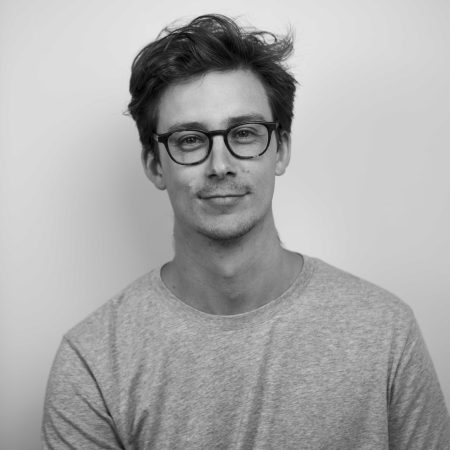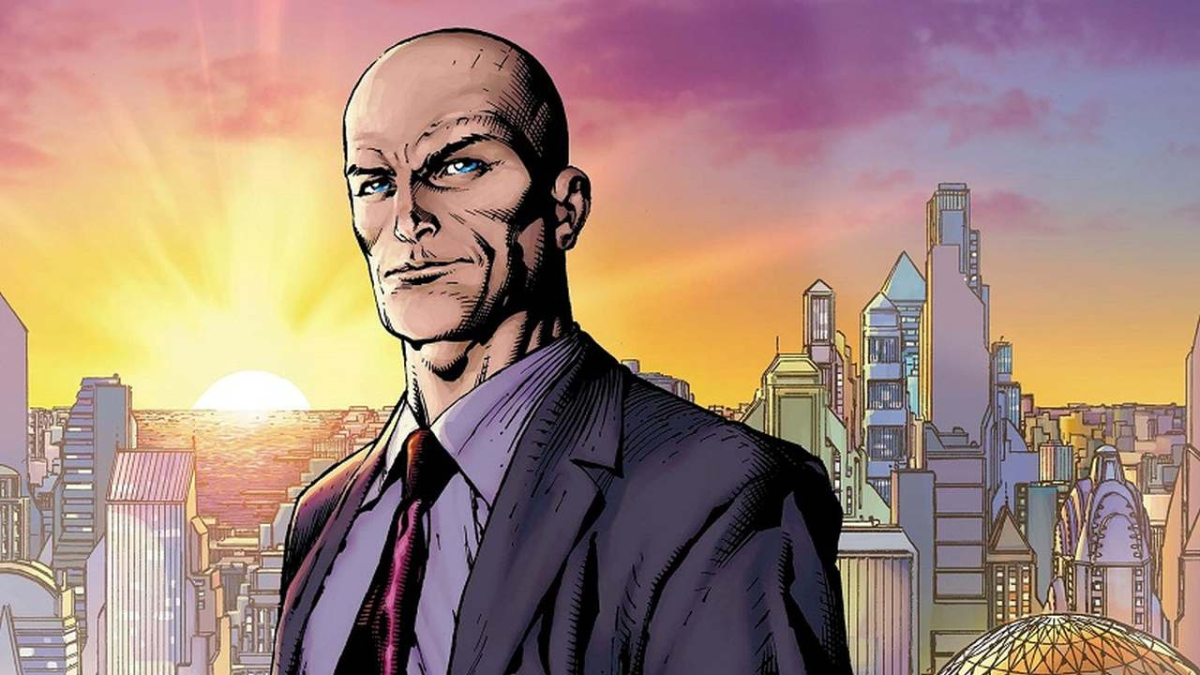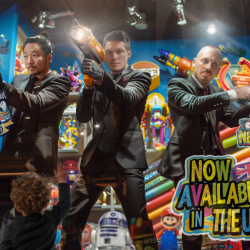Hi Psembi, cheers for taking the time to chat. You first got into the industry as a copywriter. If you could create a tagline for your life, what would it be and why?
Didn’t see that coming.

I grew up on a crocodile farm in the far north west Australian bush. Then I worked at Australia’s national broadcasting company. Then I took a job on a film driving Geoffrey Rush to and from set. Then I discovered advertising and relocated to the big smoke in Melbourne. Then to the bigger smoke in London. I made ads for Chanel to M&S and everything in between. I interviewed with John Hegarty and became a CD at BBH. Then my wife got cancer and within 20 minutes of the doctor’s appointment we’d decided to pack up after 7 years in London and left the country 6 days later. Then we had a surprise baby despite the doctors describing it as a medical impossibility. Now I run one of the more interesting agencies in the country and have a team of extraordinary people that are all much better than I am.
I can honestly say, I didn’t f***ing see any of that coming.
Creatives often look to their peers for inspiration. Who first inspired you and how have your sources of inspiration changed since starting your career?
Paul Silburn single-handedly got me into advertising when he wrote the original John West Bear Fight ad. It’s the only piece of advertising that stuck with me before joining the industry. Then I worked with him in London and nerded out on his canon of excellent work. Working with Ewan Patterson had a similar inspiring effect. As did working with Ian Heartfield and Mark Roalfe. Lately I’ve had the pleasure to hire DDB Melbourne’s incredible Creative Partner, previously from New York, and I’ve been introduced to the back catalogues of Eric Kallman and Jim LeMaitre. And I’m always looking for what Kim Gehrig, David Kolbusz and Samira Ansari (and many others) are going to do next.
Speaking of your career, you came out the gate running: the youngest creative director in VMLY&R and BBH London’s history and have had several huge firsts, including the first Aussie creative to win a BAFTA for advertising. Have you felt pressure to keep levelling up? What advice would you give other young creatives looking to follow in your footsteps?
When I started out my career I was in a rush. A rush to make work. To work on the best briefs in the agency. To get a new title. To win more awards. To move to the next job. To do it all faster. I’ve never quite lost the desire to keep moving quickly, but it has taken a back seat to the realisation that the best work takes time, and the big ideas that really transform businesses take longest of all. Nick Gill at BBH gave me the best advice I’ve ever received, and I’ll gladly pass it on: ‘your career is a marathon not a sprint.‘
You’ve won over 100 international advertising awards (and counting). Which of these awards felt the most hard-earned? What challenges did you overcome within that particular project?
I wouldn’t say any of them have come easily. Great work has always required blood, sweat and tears. Sometimes they require Richard Branson’s semen. But one of the projects required vast quantities of fake blood, and in the process, quite a few of my own tears. Back at the start of my career, I was a creative on a project to recruit Australia’s most highly-regarded trauma surgeons for part-time roles in the Australian Defence Force. We had a simple idea for teams of army medics to deliver patients (actors playing the part) to the private consulting rooms of surgeons across the country and have them triage the patients to see if they could handle them.
Crafting a realistic experience wasn’t so simple. I read through the (incredibly graphic) medical journals from surgeons deployed on the front line of Iraq and Afghanistan, and adapted the cases to recreate. One of the case files was of a young pregnant woman who had been shot through her torso, just missing her unborn baby. It was traumatic but effective, the surgeons responded brilliantly and many went on to be deployed.
Last year, DDB launched its Creative Index — an innovative way to track creativity’s $580 billion commercial impact on Australia’s economy. What are your hopes for the Index’s impact over the next five years? Any updates you’d like to share?
Lots to share here. The Index’s momentum continues to grow as more and more partners and businesses start to use the lessons from businesses to improve their own creativity. Every quarter, the analysts at Jarden (our investment and advisory group partner) reevaluate the companies that met the criteria and identify any companies to join the list — or strike off any companies that reduced the role of creativity within their organisation. We’ve yet to see much movement in the companies identified, but we’ll see what the end of the financial year brings. The companies on the Index continue to outperform the market average by more than 50%.
There’s been a lot of interest from around the world to roll this idea out. We’re about to finish the roll out for the New Zealand stock exchange NZ50, and in the next 12 months we’d like to see the Creative Index start to track the value of creativity in larger markets. And if anyone reading has a few tens of millions of dollars they want to invest to turn the Creative Index into a tradeable ETF, just reach out.
As an ECD, how do you navigate the fine line between maintaining your team’s artistic integrity and meeting the demands of clients? What strategies have you found most effective in aligning the two?
I’ve a strong opinion on this one. These two things shouldn’t be at odds with each other. If they are, there’s a problem that’ll only tear the partnership and ideas apart. All of our teams work with our brands to understand their ambitions and challenges to reach a solution that grows their business. Sometimes it takes a long time to find the opportunity. Sometimes it doesn’t. But we only partner with clients that understand that it takes lots of deep collaboration and radical candour to get to the best result.
Before returning home to Australia at the end of 2020, you spent seven years in London, including stints at Revolt, Gravity Road and the aforementioned BBH and Y&R. We know agility is crucial in advertising: how has working for a variety of agencies enhanced your creativity and overall professional success? Did any cultural differences between UK and Australian agencies influence your work?
I could sum up the largest cultural difference with one of my favourite Hegarty-isms. ‘Advertising is 80% idea and 80% execution.’ Sadly many Australian agencies are better at math than Hegarty and treat craft as the 20% afterthought, not critical to the magic of wonderful advertising. Upon returning to Australia and seeing what most brands stand proudly behind (often the same slice-of-life, vaguely-masculine, vaguely-old-fashioned Aussie humour), we’ve decided to set out and create an agency that values craft and building distinctive brand worlds above short-term one offs. Our art-based Creative Partner is the best I’ve ever worked with. Our Creative Partners are from New York and London agencies and bring different points of reference, and we encourage that in all our teams.
What’s next for you? What excites you most about the industry today, and what are your hopes for the future?
We’re building a wonderfully interesting agency in DDB Melbourne. When myself and Matt Pearce (the strategic brain responsible for Meet Graham and Hungerithm amongst others) joined just over 18 months ago, we had just over 30 staff, now we’re sitting over 90. Our creative ambition is to create the best work of our careers, and importantly, create work that doesn’t look or feel like Australian advertising. We love working with global brands on global campaigns, with Made by Dyslexia being a recent example and our upcoming global work for Movember launching soon.
(Unashamed plug here, if you’re a global brand that wants to work with an agency with a creative boutique feel, but with the chops and capability of a global network, get in touch.) We’re at the start of our agency journey with a huge appetite and ambition. I can’t wait to see where it goes.
And lastly, if you could create an ad campaign for any fictional character or universe, who or what would it be, and why?
Lex Luthor. Plenty of ambition. Good at making decisions. Deep pockets.
Featured image: Lex Luthor / DC Comics


























